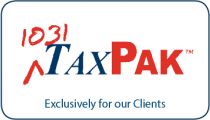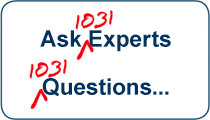You are here
1031 News › Six things you need to know about §1031 - Part 6 Equal-or-Up Rule › Six things you need to know about §1031 - Part 6 Equal-or-Up RuleSix things you need to know about §1031 - Part 6 Equal-or-Up Rule
Error message
Deprecated function: The each() function is deprecated. This message will be suppressed on further calls in _taxonomy_menu_trails_menu_breadcrumb_alter() (line 436 of /home/expert1031/public_html/sites/all/modules/taxonomy_menu_trails/taxonomy_menu_trails.inc).Section 1031 allows you to roll the gain from the sale of your Old Property to the purchase of your New Property. To do this, you have to jump through certain hoops: we've written previously about how your property has to be held for investment and that it can not be held for resale. We've talked about the requirement to identify potential replacement properties for your exchange and how you have to complete a list of these potential properties within 45 days with the stipulation that what ever you purchase must be on your 45 Day List. We also talked about how your money must be held by an independent third party called a qualified intermediary and how you must make sure that the intermediary holds your money in an account separate from their other exchanges. And last month we talked about the requirement that you need to take title to the new property in the same name or entity that held title to your Old Property.
This month we'll cover the final rule which requires that to pay no tax you must do two things: you must buy equal or up and you must reinvest all the cash. This sounds very complicated, but let me make it simple for you.
The first part of the rule is that if you buy equal or up you will pay no tax. If you sold your Old Property for $100,000 and you are buying your New Property for $90,000 (i.e., you bought down by $10,000), does this mean that your exchange is toast? No -- it just means that you must pay tax on $10,000 because this is the amount by which you failed to buy equal or up.
The second part of the rule requires that you reinvest all the cash. Let's say that you sold your Old Property for $100,000 and that you paid the mortgage and closing costs associated with this property in the amount of $40,000, leaving $60,000 which went to your intermediary (and was placed in a separate account, of course). This $60,000 must be reinvested in your New Property in order to avoid tax.
Let's say that you pay $150,000 for your New Property. You've met the equal or up rule because you sold for $100,000 and bought for $150,000. But if you get a mortgage for $100,000 you only need $50,000 of the $60,000 that the intermediary is holding, which will leave $10,000 of funds that are not reinvested. Again, this $10,000 is taxable because you failed to reinvest the entire proceeds from the sale (the whole $10,000 is taxable even if you put $15,000 cash down when you originally bought the property and spent another $5,000 on remodeling it a couple of years ago).
In both of these examples it's important to note that the entire $10,000 is taxable. You can not offset any of your costs against this amount. Note that in both examples you could avoid paying tax on this amount by buying a second property (assuming of course that you listed it on your 45 day list), and in the second example you could avoid the problem by changing the loan, or simply paying it down at the closing.





Add new comment